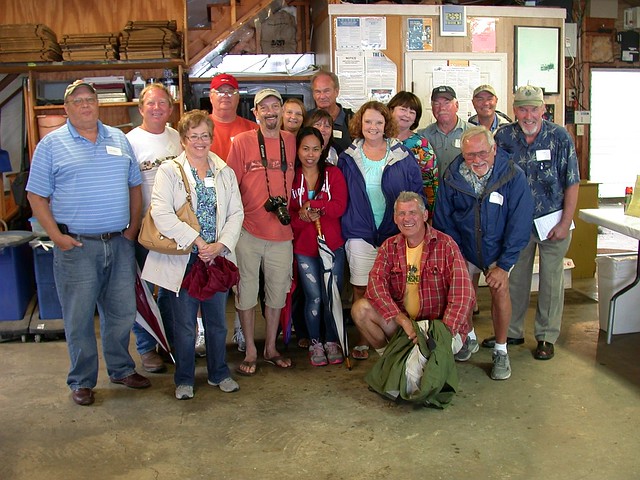
Southeastern Palm Society members
Members of the Southeastern Palm Society were treated to a meeting last weekend at Plant Delights Nursery and Juniper Level Botanic Gardens in Raleigh, North Carolina. It had been several years since my last SPS meeting, and I'm always looking for any excuse to visit Plant Delights, so I decided to drive from Washington, DC to Raleigh to attend the meeting. (I was fortunate to make it in 5 1/2 hours this trip. I've made the trip in 4 1/2 hours, but once it took almost 8 hours. The less said about I-95 through northern Virginia, the better.)
We were greeted and graciously hosted by Tony and Anita Avent. Attendance was on the low side, probably due to the weather; rain had been forecast and it was delivered! But seriously, how often do you get a personal tour around Plant Delights by Tony Avent himself? Even in the pouring rain (and I did get soaked) it was worth the trip.
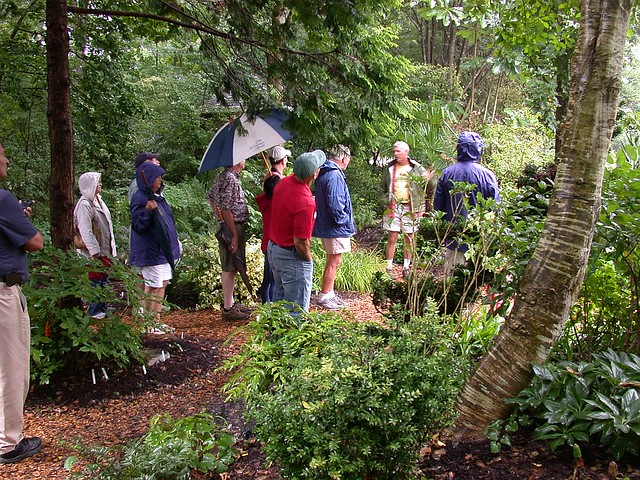
SPS members touring the gardens in the rain with Tony
The day began with Tony giving a presentation about the history of the nursery and gardens, including some unbelievable before-and-after pictures. Tony also gave a quick run-down of how various palms had made it through the area's coldest winter in many years. Despite lows ranging from 4 to 9 degrees on different parts of the property, most palms survived with little damage. Needle palms (Rhapidophyllum hystrix) and dwarf palmettos (Sabal minor) came through completely unscathed--no surprise as these species suffered virtually no damage in the Washington, DC area either. Of the windmill palms (Trachycarpus fortunei), Tony said the "Bulgarian" strain seemed to suffer the least damage. Sabal × brazoriensis was another clear winner, coming through without damage. Even Trachycarpus takil--a specimen identified as the true species, and still of unknown hardiness--came through.
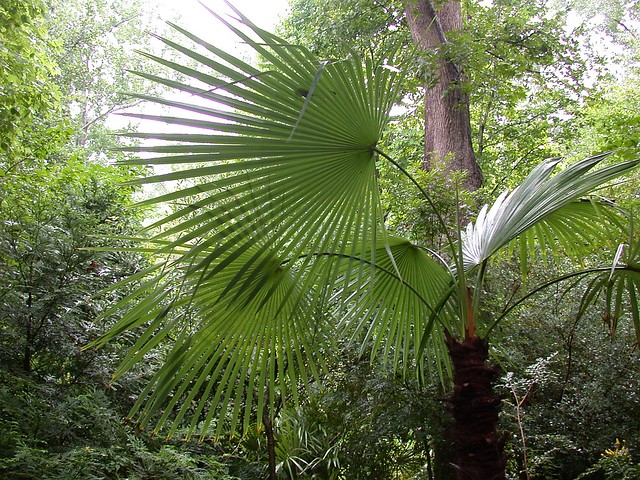
Trachycarpus takil
Tony also discussed his plans to ultimately convert the for-profit nursery into a not-for-profit botanic garden, a process that is already in the works. After the talk, the rain held off a bit longer and we were turned loose to visit and shop at our leisure. We were then treated to a very nice lunch by Tony and Anita, and after that Tony took us on a tour of the nursery and gardens. Of course that's when it started to rain again, but my only complaint is that it made photography more or less impossible.
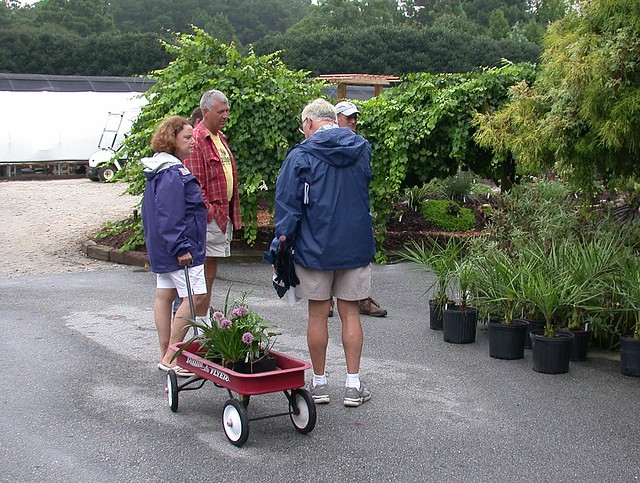
Checkout
It's hard to describe what it's like to wander around Plant Delights. Tony is a businessman, but he's also passionate about plants and interested in the unusual and obscure. Everywhere you turn, every plant you look at, you see something new, or rare, or just plain fascinating. There are no other plant collections like it, at least not on the east coast, and every time I visit I find something I've never seen before. Having Tony lead the tour took it to a whole new level.
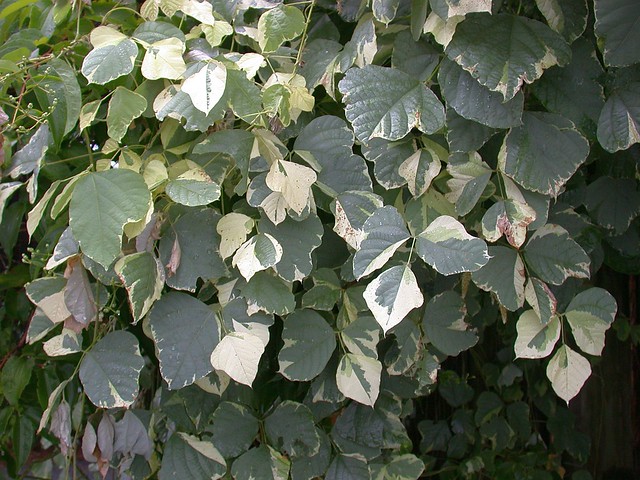
Variegated kudzu
One advantage of the low turnout was that I had a chance to talk to Tony one-on-one, about our common interest in finding and breeding hardy begonias, about what makes a plant popular or profitable, and a number of other topics. Tony is very approachable, and calling him "affable" is an understatement. The first time I visited PDN, when he found out I was interested in hardy gesneriads and begonias, he whisked me away on a private tour as if I was his oldest friend.
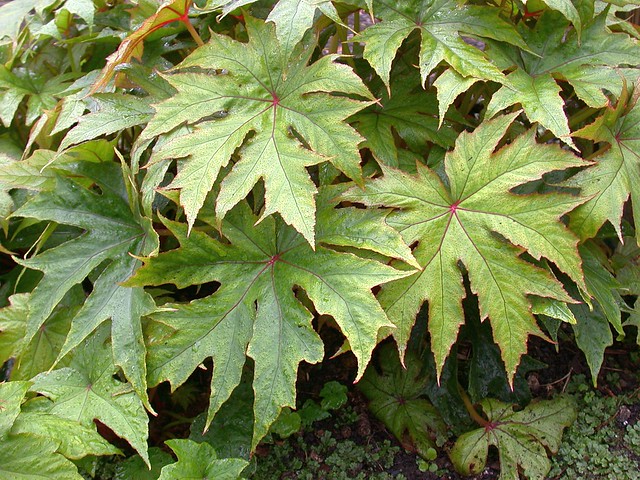
Begonia pedatifida, a hardy species
I also caught up a bit with Gary Hollar, former SPS president and owner of Gary's Nursery in New Bern, NC. The first time I visited PDN was also for an SPS meeting, when Gary was still president. The 2007 summer meeting was the 15th anniversary of the society and it had a huge turnout--nearly 100 people--so my expectations for subsequent meetings were a bit skewed! Nevertheless I greatly enjoyed later meetings at Norfolk Botanical Garden (2008) and JC Raulston Arboretum (2009). In addition to visiting some wonderful gardens I might otherwise never see, one of the greatest pleasures of events like this is finally meeting the people I otherwise know only from online discussion lists, from Facebook, or as names in a society magazine.
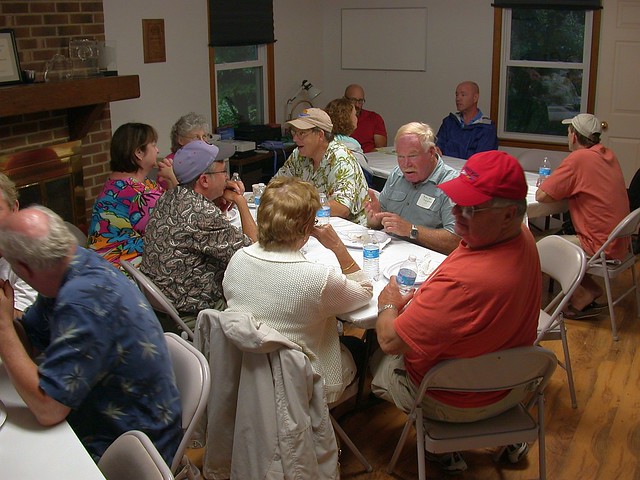
SPS members socializing over lunch
And of course there were palms, palms, and more palms! Everywhere you turned around, there were more. One surprise to me was that many were growing in fairly deep shade, and apparently doing quite well. In fact much of the property is heavily shaded, which made photography somewhat challenging on an overcast day!

Gardens
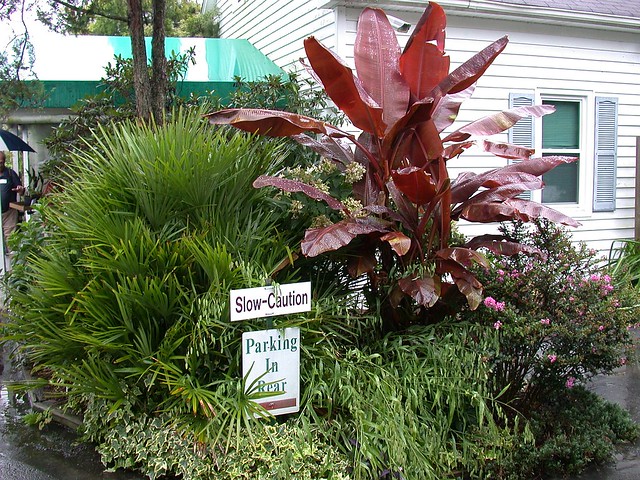
Rhapidophyllum hystrix

Sabal minor 'McCurtain'

Sabal × brazoriensis
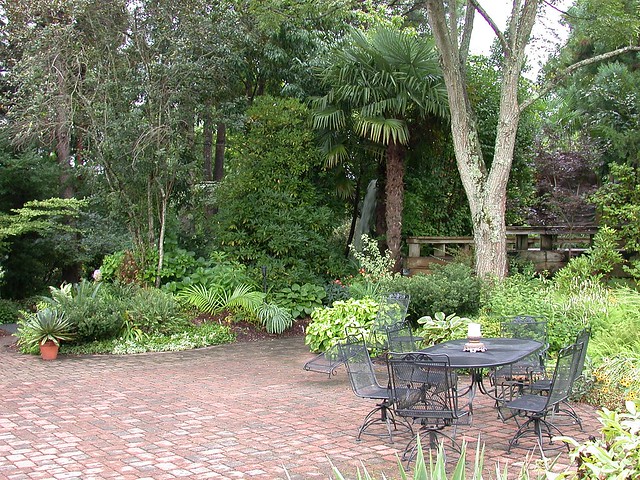
Trachycarpus fortunei
Of course I couldn't come home empty-handed. I was very pleased that I limited my selection to four plants, and only one of those was an impulse purchase! But I'm already planning a trip back next spring for one of the nursery's open houses, among the few times during the year the nursery and gardens are open to the public.
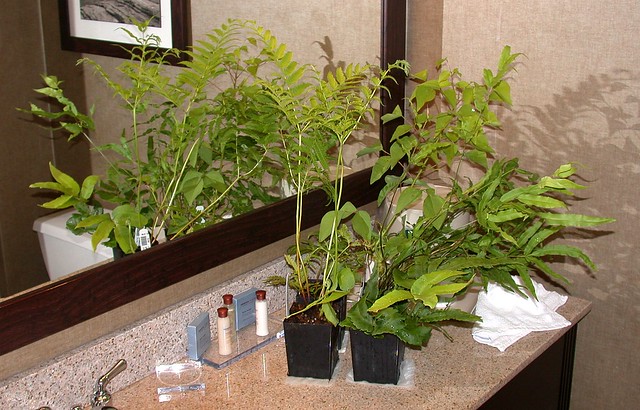
Plants in the hotel bathroom
Please visit the Southeastern Palm Society and Plant Delights Nursery pages on Facebook. Also be sure to check out the Plant Delights Nursery blog as well as Anita's photography on Tumblr.
For many more photos from this trip, see my Plant Delights Nursery 2014 album. I'll have more non-palm photos in a separate blog post that will also include photos from JC Raulston Arboretum.

Great summary, John! It was a wonderful day, despite the rain, and it was a great pleasure finally meeting you in person.
ReplyDeleteTake care,
Jeff and Steve
Thanks Jeff, it was good meeting you and Steve too!
DeleteThank you for sharing the photos you were able to take, I hope to make it to PDN and the gardens someday...
ReplyDeleteStill more photos coming, I'm getting a bit behind in my blogging! PDN is definitely worth a visit, just be aware that it's normally brutally hot & humid in summer.
DeleteLove the Begonia pedatifida. PDN catalog says 7b but another site says 7a (will resprout from ground). Might have to try for that wonderful leaf. Wonder how it fared this past winter for PD's display gardens.....?
ReplyDeleteBTW, thanks for adding me to your blog list, I'm adding you. Enjoy your blog. Sarah
Thanks Sarah! There are several different clones of B. pedatifida in cultivation; not sure if they're all similar in hardiness, but my own survived 5 degrees with only a light mulch.
DeleteThanks, John, for sharing your post with us. It's nice to see the garden through the eyes and lens of other gardeners and photograpers. See you soon!
ReplyDeleteThanks Anita, it was a pleasure to finally meet you in person. I likewise love seeing my own garden (or anybody else's for that matter) through somebody else's eyes. We all focus on completely different things, and I'll often catch myself saying, "now how on earth did I miss that???"
DeleteBegonia pedatifida survives winter here with mulch.
ReplyDeleteThat's good to know, I was skeptical about the "hardy" begonias until this past winter gave them a good test! In fact had great success with several begonia species and hybrids--they were mulched but we also had snow cover for the worst of the cold, which added some extra insulation. I'll be writing that up as a blog post in the next couple of weeks.
Delete